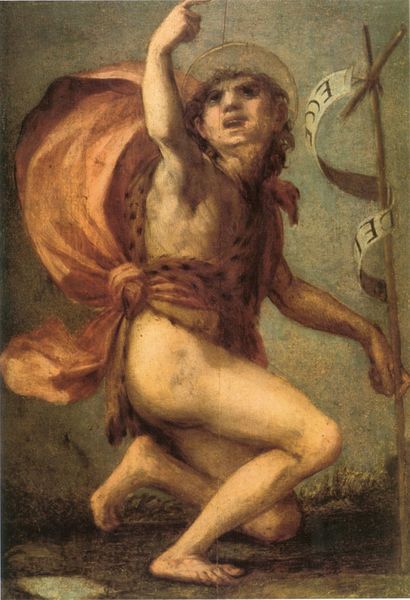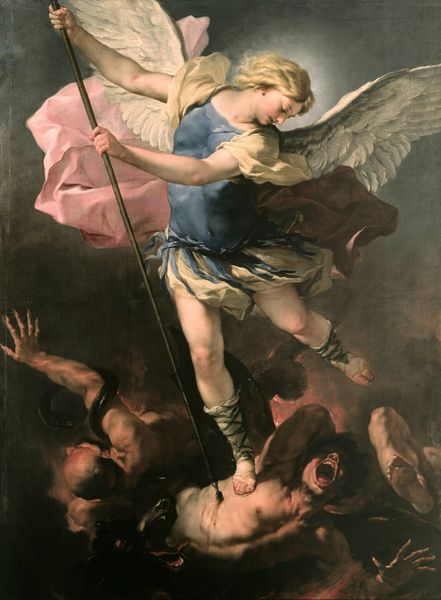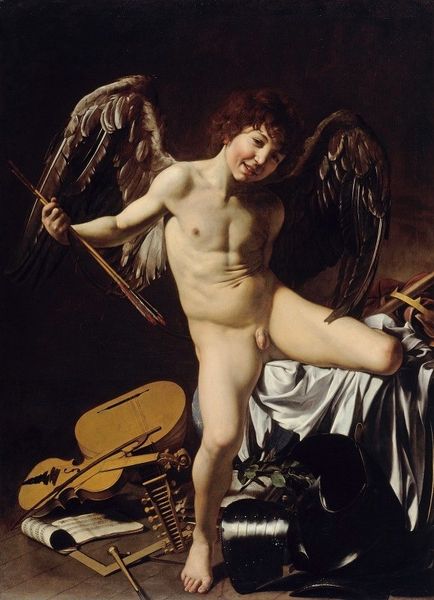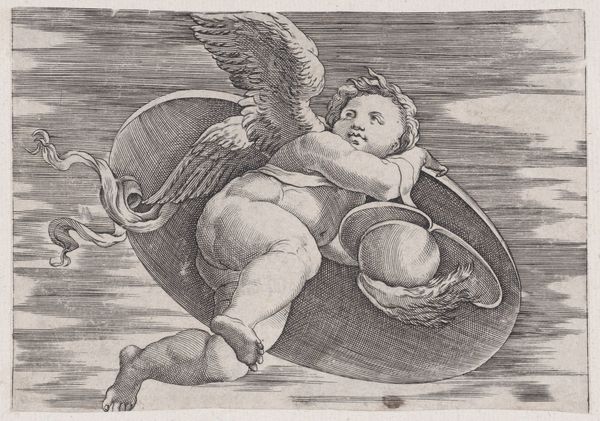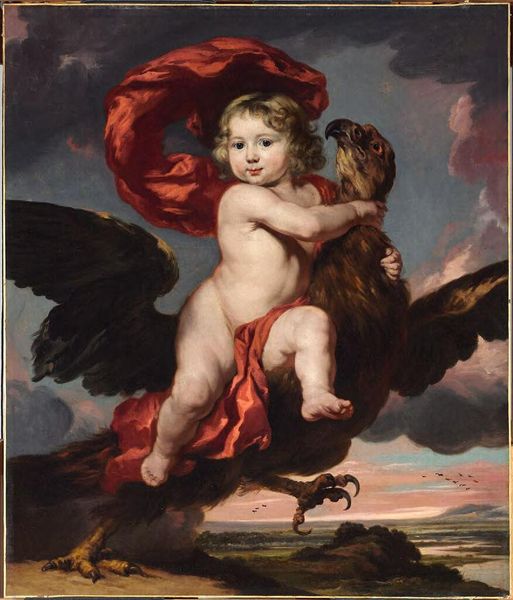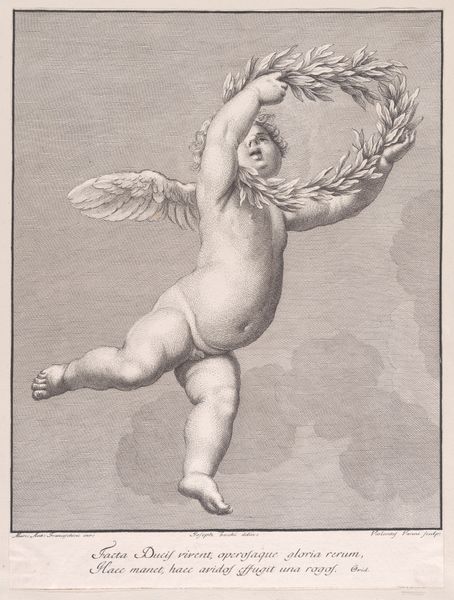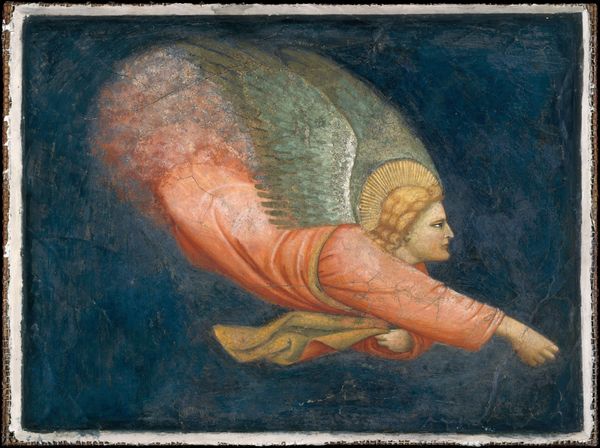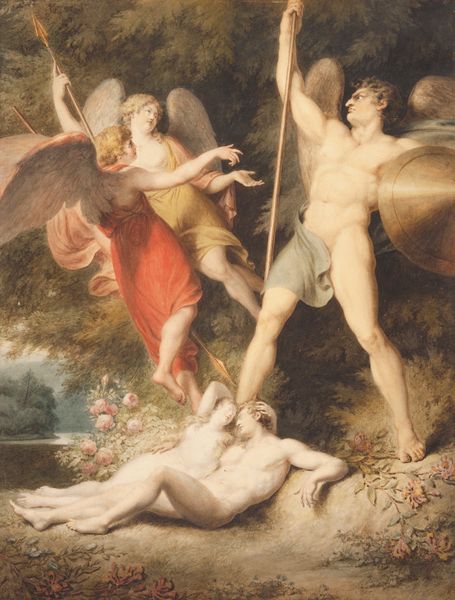
oil-paint
#
portrait
#
allegory
#
oil-paint
#
charcoal drawing
#
figuration
#
oil painting
#
roman-mythology
#
cupid
#
mythology
#
human
#
northern-renaissance
Copyright: Public domain
Curator: Here we have Hans Baldung’s “Amur,” an oil painting from around 1530, dating it to the Northern Renaissance. It presents a winged Cupid wielding a very large arrow. Editor: The first thing that strikes me is the dramatic contrast! The stark darkness of the background throws Cupid's pale, almost luminous, form into sharp relief. And is it me, or does he seem less cherubic and more… determined? Curator: The dramatic lighting is definitely a stylistic choice meant to highlight specific symbolic attributes. Cupid, often seen as frivolous, is presented here with considerable force. Think about it, he is an allegorical figure. Baldung wants us to consider how even the god of love can brandish destruction. Editor: Yes, the visual language communicates intent so well. The size of the arrow—comically large for a child—suggests the overwhelming power of love, its capacity to wound. Even the placement of the wings, partially obscuring him, hints at a darker, perhaps repressed, aspect. How was Cupid being received in 16th century Germany, what new iconographies can be associated? Curator: Well, look at the materials. Baldung’s use of oil allows for incredible detail, note the feathers in the wing and Cupid's expression; what he achieves with this medium shapes the viewing experience. Now imagine, instead, it was executed as a woodcut – something that could be reproduced easily. The material shapes the means of disseminating an idea or ideal. Were patrons looking to consume a type of love, the power and burden of it? It is no accident Baldung choose to render in oil. Editor: True, oil affords a level of realism absent in other methods. But I return to the symbolism; consider the narrative Baldung's constructed. Love, here, is presented not as a gentle force, but something imposing, weighty. His art captures that psychological shift. Curator: Exactly! Baldung's approach forces the viewer to think critically about love's production. How does society condition us to understand its forms, its power, its consumption? The material allows him to craft a specific response, which leads to social action through analysis. Editor: And the painting's iconographic density keeps generating fresh questions. Cupid’s form against the impenetrable black creates more visual drama with questions about art production. Curator: A truly thought-provoking image, a great representation of what art making provides as a method to consider cultural frameworks!
Comments
No comments
Be the first to comment and join the conversation on the ultimate creative platform.


